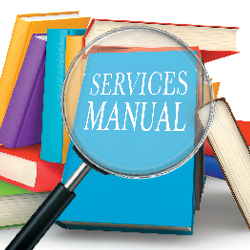|
REGISTRATION REQUIRED
exhibiting 101
 Service, Please
Keep your budget safely in the black by following these cost-saving tips when placing orders for common trade show services. By Betsy Earle
According to EXHIBITOR's 2020 Economic Outlook Survey, exhibit managers spend 15 percent of their budgets on show services – a slice of the pie second only to exhibit space. This is one area of face-to-face marketing where it is remarkably easy to overspend via placing order by rote, not making a careful assessment of what your true needs are, and not completing a few basic steps to make sure you aren't blowing through cash with little or no return. Thankfully, a bit of planning and strategic thinking can net considerable savings.
Before we get into the nitty gritty, know this: My No. 1 piece of advice is to access the full exhibitor services kit for each show (which can often be found on the general service contractor's website) download it, and give it a careful perusal. You don't need to memorize every word, but do read it closely enough to get a sense of the big picture and any show-specific policies that should be on your radar. Second, do not miss any early discount deadlines, which are typically 21 to 45 days out from the first day of install and can save you up to 30 percent off rates for on-site service orders. Of course, there are a number of other ways to trim the show-services fat. Here are some best practices to take into considerations as you prepare for your upcoming trade shows. Electrical ➤ Understand which items require dedicated electrical service – and which ones don't. Laptops, phone chargers, audio speakers, and even LED arm lights don't need a ton of juice. A typical power strip can handle 15 amps, which should be enough to meet the needs of exhibitors who only have to plug in a couple devices. This allows you to only order a single 15 amp outlet (no need to order a 20 amp because you'll never use those last 5 amps with an average power strip) and be good to go. That said, consumer appliances, medical devices, and heavy equipment will likely need dedicated outlets. But by consolidating small items, you can place an order for fewer additional outlets, which could save you around $75 a pop. ➤ To minimize your labor costs, make sure that your electrical diagram notes the booth's orientation, has the locations of the main drop and outlets clearly marked, and includes a key with the power requirements of each outlet. ➤ Consider skipping electrical service entirely. Many consumer-grade power banks are capable of keeping laptops, lead-retrieval equipment, tablets, etc. fully charged all day. The same holds true for industrial batteries, which are increasing in popularity and can pack enough punch for backlit elements, monitors, and more. Installation & Dismantle ➤ Establish when you have access to the hall for both installation and dismantle. Scheduling as much labor as possible on straight time saves you a boatload of money, as overtime in most cities is time and a half. Let's assume you can hire a crew of five for four hours at $125 an hour per laborer. That's $2,500 (5 x 4 x $125) at straight time. But if just one hour of setup happens outside normal hours, you're looking at about an extra grand in labor. ➤ Organize an install plan with detailed CAD drawings and step-by-step instructions on your exhibit assembly. I also am a firm believer in including diagrams indicating where I want each graphic to go. Labels and easy-to-understand, easy-to-find directions can save you significant dollars in I&D labor costs. ➤ Supervise your own I&D whenever possible. Most GSCs and exhibitor-appointed contractors will charge 30 percent on the entire I&D bill if you don't bring your own supervisor. However, it's important to do a cost/benefit analysis between you going to the show to supervise or letting a crew lead handle it. For example, if it would cost you $500 to go to the show a day early and your labor bill without supervision would be $4,000, your trip would pay for itself by avoiding a $1,200 surcharge. But if your base unsupervised labor bill is $800, the $240 surcharge is the better option. ➤ Do not buy a bunch of unassembled shelving units and other furnishings to save money on renting furniture. There is practically nothing more expensive than setting up cheap furniture at high labor prices. In the majority of cases, you're better off renting furniture versus trying to save on the front end and paying dearly on the back end. Internet ➤ Preload content onto thumb drives or external hard drives so that you don't need internet at all. Also, most lead-retrieval systems and devices can now store data locally and don't require an internet signal to function. Instead, at the end of the day you can log in to your devices from your hotel room and upload lead info to your customer relationship management system. ➤ Determine how much bandwidth you need and if you require a dedicated IP address and/or a wired connection. If your product or service depends on internet connectivity in order to function for in-booth demos and presentations, then you're likely going to need dedicated bandwidth. But if not, maybe you can share the venue's signal with other exhibitors. A dedicated connection of 3 Mbps can cost upwards of $3,000 per show, so this is one area where it's crucial to not pay for service you don't need. ➤ Prior to the pandemic, exhibitors were up in arms about some venues' policies regarding mobile hot spots, i.e., hand-sized devices that allow users to access their own wireless internet and sidestep paying for the show's Wi-Fi. While the reliability of these hot spots can be spotty and venues' attitudes toward them in a cost-conscious post-COVID landscape remains to be seen, exhibitors should still be aware of this option. Rigging ➤ Know the rules for the city and venue, and consider altering your plans accordingly. Some convention centers charge a flat rate for hanging elements if you ship your sign to the advance warehouse and provide complete install documents. This enables you to reliably predict your total bill if you have a basic hanging sign with one or two rigging points and no bells and whistles. But in other cities and venues, exhibit staff can assemble their own signs, or sometimes the rigging crew has to do it. Minimum billed times can also vary and quickly throw your budget out of whack. If a particular locale comes with high rigging prices, do you have any alternatives, e.g., a smaller element or one with a more simple installation process? ➤ In that same vein, do you really need a flown sign that is backlit and spins with the help of an electric motor? Electrical is most often billed in two parts: labor and the actual service. But there is one more niche category for ceiling or overhead electrical service. It's not going to be cheap to add a suspended outlet to power your motor or light up your graphics. If these add-ons aren't going to help your ROI, it might be best to ditch the spinning and invest the funds somewhere else. ➤ Don't rig if you don't have to. There are several options to gain height in your booth that don't necessarily require you to work from the ceiling. While in-line booths have significant height restrictions, island exhibits typically get 16 to 18 feet of airspace. There are a number of signs out there that can be mounted to a truss that is built up from the floor, as well as easy-to-assemble tower structures that offer a grand presence without the expense of a rigging crew. ➤ Ship your hanging element with a document that clearly communicates the sign's orientation on the show floor. Whoever is rigging your sign needs to know not only where to put it but also which direction it faces. Having a crew come back to reposition it can cost you around $150. Also, receiving the early bird discount for your rigging order is typically contingent on the hanging sign arriving at the advance warehouse prior to the advance shipping date, so don't forget to get this shipment out the door in a timely manner. Food & Beverage ➤ Review all contracts to familiarize yourself with the applicable cancellation policies, service charges, and fees. Let's say you're ordering coffee service for your booth. If you're paying a service charge or a delivery charge, you'll want to think about how much water you need in advance, as calling for additional deliveries throughout the day could lead to supplementary charges. It might make more sense to store extra gallons of water under a counter so that you can swap them out yourself as needed. ➤ Limit hospitality offerings for when they can make the most impact, and pay close attention to the minimum hours you need to hire an attendant, which varies by venue. For example, if your A-list keynote speaker is giving his or her in-booth address at 2 p.m. and the F&B provider mandates that servers have a four-hour minimum, consider scheduling your attendant to start handing out the lattes at 1:30. Doing so will lure people to the presentation and ensure there is still java on hand for subsequent meetings. That said, an especially budget-conscious exhibitor could negate the need for an attendant by picking unstaffed options, e.g., boxed lunches instead of buffets and bottled speciality coffees over made-to-order joe. ➤ Consider F&B options that don't require refrigeration, such as granola bars, cookies, and chips. Yes, yogurt, apple slices, and veggies may be healthier, but offering them might require needing a small fridge in your booth, and that means ordering 24-hour power for that particular outlet, which can result in a 50- to 100-percent upcharge. Show services consume a hefty chunk of your budget, but thankfully you can save a substantial amount of money by putting in a bit of legwork and having a thorough awareness of each show's policies. While we all want our booths to be the absolute best they can be, it's important to separate our needs from our wants and make decisions that are in the best interest of our programs. E  Betsy Earle, CTSM
Betsy Earle, CTSMmanaging director and founder of Event Driven Solutions LLC. Earle obtained her MBA at the University of Miami and earned her Diamond-level CTSM designation in 2018. Exhibiting101@exhibitormagazine.com
|
|
|
||||||||||||||||||||||||||||
|
|
||||||||||||||||||||||||||||
|
TOPICS Measurement & Budgeting Planning & Execution Marketing & Promotion Events & Venues Personal & Career Exhibits & Experiences International Exhibiting Resources for Rookies Research & Resources |
MAGAZINE Subscribe Today! Renew Subscription Update Address Digital Downloads Newsletters Advertise |
FIND IT Exhibit Producers Products & Services All Companies Get Listed |
EXHIBITORLIVE Sessions Exhibit Hall Exhibit at the Show Registration |
ETRAK Sessions Certification F.A.Q. Registration |
EDUCATION WEEK Overview Sessions Hotel Registration |
CERTIFICATION The Program Steps to Certification Faculty and Staff Enroll in CTSM Submit Quiz Answers My CTSM |
AWARDS Exhibit Design Awards Portable/Modular Awards Corporate Event Awards Centers of Excellence |
NEWS Associations/Press Awards Company News International New Products People Shows & Events Venues & Destinations EXHIBITOR News |
||||||||||||||||||||
|
||||||||||||||||||||||||||||






